1. Sketchbooks
A sketchbook is a versatile tool that allows artists to capture inspiration, experiment with techniques, and chronicle their personal development. When selecting a sketchbook, consider the paper type, which impacts how well it accommodates different mediums such as pencils, inks, and light watercolour washes. Thicker, acid-free papers prevent yellowing over time and provide a sturdy base for artworks.
Sketchbooks come in various sizes, from small, portable ones for convenience to larger sizes that offer ample space for complex, detailed sketches. The paper's texture, whether smooth or rough, affects the application of the medium. Smooth surfaces are favoured for detailed work and ink-based drawings, while textured surfaces suit charcoal or pastel drawings, adding depth to artistic compositions.
Engaging regularly with a sketchbook encourages continual practice and improvement. It serves as a reference, allowing artists to track previous works and insights, which can be instrumental in refining skills. Maintaining a sketchbook fosters a disciplined yet joyful habitual practice of sketching, enabling creativity to flourish without formal constraints.
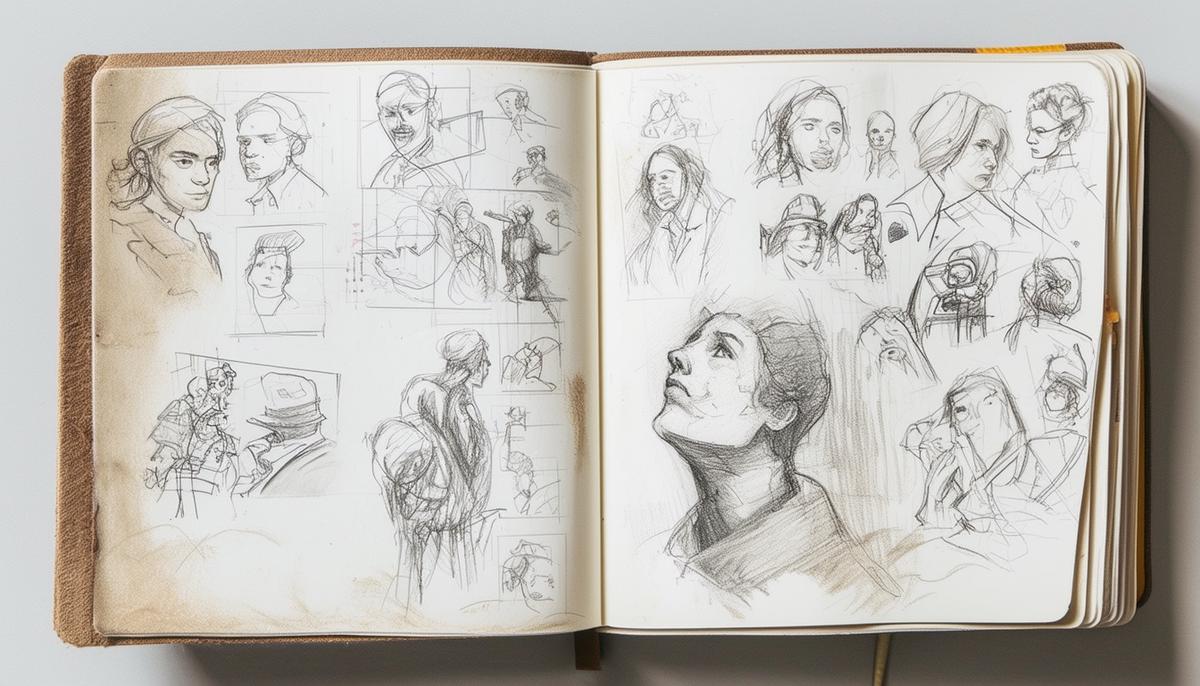
2. Graphite Pencils
Graphite pencils are a cornerstone of many artists' toolkits, catering to a wide range of expressions from subtle shading to bold lines. They are marked with 'H' for hardness and 'B' for blackness, with 'HB' in the mid-range. Hard pencils (H, 2H, 3H, etc.) offer precision and fine lines, ideal for technical drawings or intricate details. Softer B pencils (2B, 4B, 6B, etc.) allow richer, darker shades and texture building, preferable for vibrant sketches or portraiture.
Selecting the right pencil grade depends on artistic style and the desired contrast or depth. For beginners exploring techniques and textures, an assortment containing a range of grades from 2H to 6B provides a solid palette for experiments. Brands like Derwent and Faber-Castell offer superb beginner sets.
To master pencil techniques:
- Use H-grade pencils for light, precise strokes that define form without overwhelming.
- Transition to B-grade pencils to deepen shadows or intensify outlines.
- Use the side of the lead for broader strokes and efficient shading of large areas.
Consistent practice is key; exploring and combining these elements will unlock your unique artistic tone. Always opt for quality pencils that provide reliability and resilience. Regular sharpening ensures precise and pristine craftsmanship.
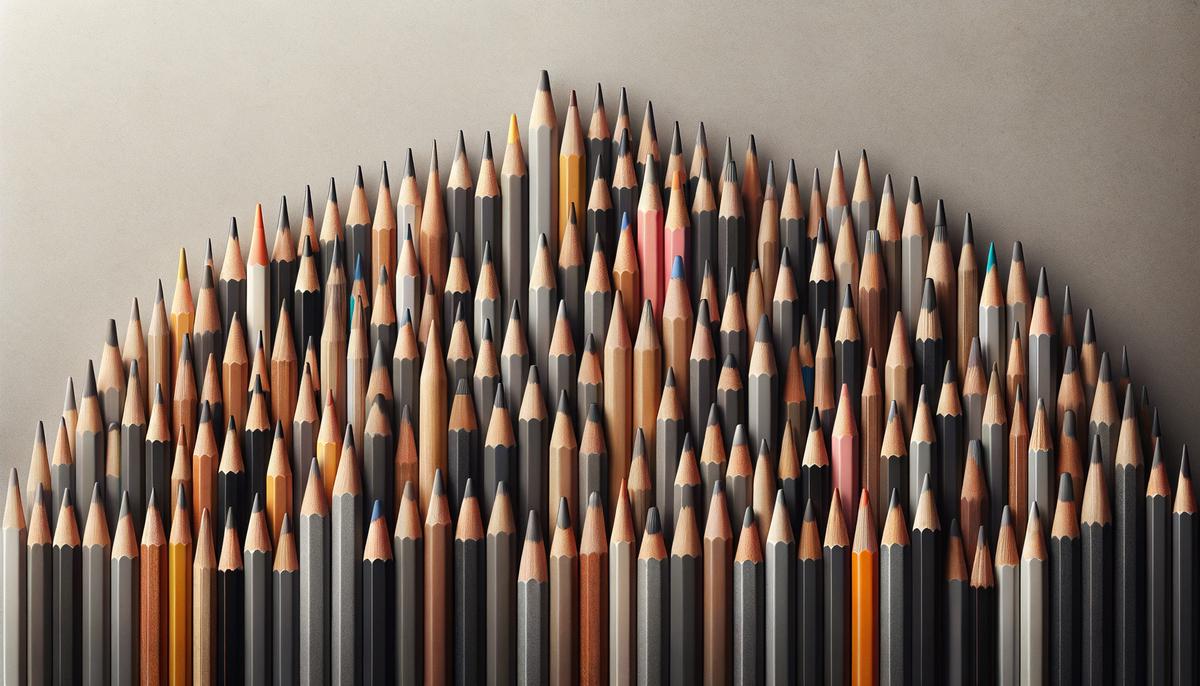
3. Erasers
Erasers are instrumental in refining, enhancing, and sometimes even in the creation process itself. The two most common types are rubber erasers and kneaded erasers.
Rubber erasers are ideal for erasing heavy pencil marks from most papers. They are excellent for completely removing lines but can be abrasive. When using a rubber eraser, bits of eraser can accumulate on your paper, so gentle brushing away of these 'eraser crumbs' is necessary to avoid smudging.
Kneaded erasers are a favourite amongst charcoal and graphite artists. They absorb the medium rather than scraping it off and are pliable, allowing the artist to shape them into points for precise erasing or flats for gently lifting pigment. They are useful for creating gradients or highlighting areas in sketches and don't leave behind residue.
Erasers are transformative in technique application. By selectively erasing, artists can introduce highlights that enhance dimensionality and realism. They help in softening edges or textures that require a delicate touch and are indispensable in portraits for subtle adjustments in skin tones.
Selecting an eraser depends on the medium and desired outcome. For detailed pencil work, softer rubber erasers are preferable to avoid tearing the paper. Kneaded erasers are best used with charcoal or graphite for their gentleness and versatility. For coloured pencils, erasers specially designed for waxier or oilier pigments might be required.
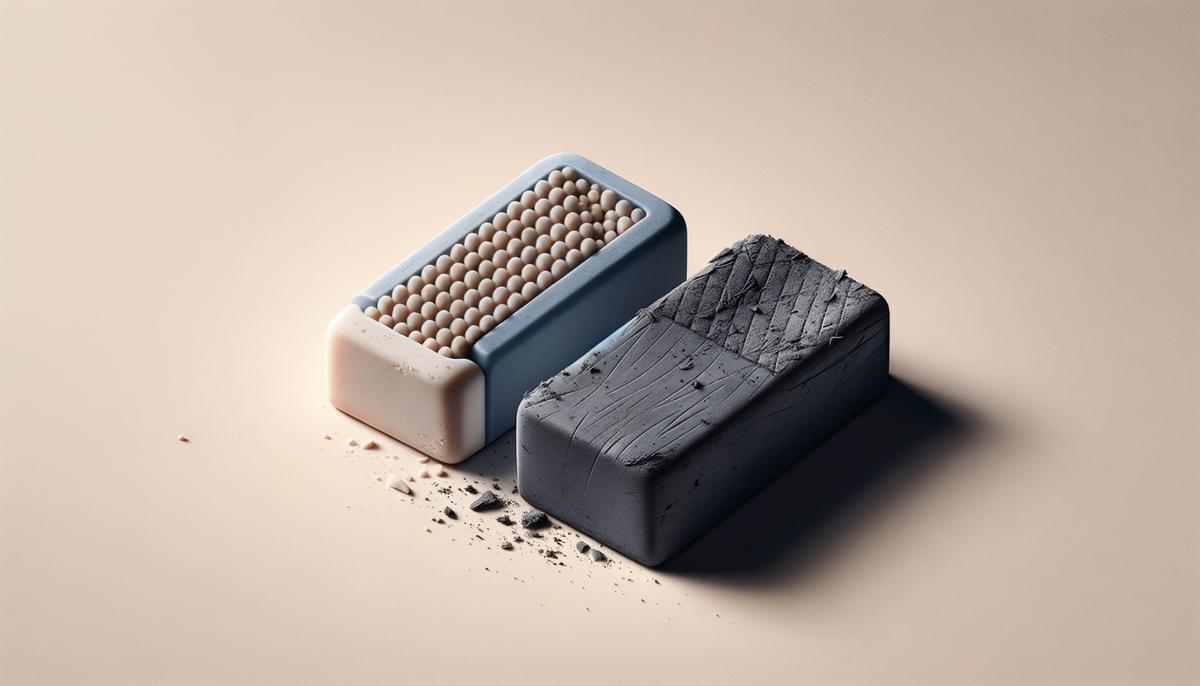
4. Drawing Paper
Choosing the proper drawing paper is crucial because it profoundly influences how materials react and the final artwork's appearance. Paper weight, denoted by grammes per square metre (gsm), indicates the paper's thickness. Heavy papers (higher gsm) can handle enthusiastic scrubbings and repeated erasing without tearing, making them suitable for watercolours or heavy paint applications.1 Lighter papers (less than 120gsm) are apt for quick sketches and light wash techniques but may wrinkle when exposed to too much moisture.
The texture or 'tooth' of the paper can alter the feel and visibility of the applied medium. Papers with pronounced tooth give pencil, charcoal, or pastels something to grip, ensuring rich layers of shade. Smooth, hot-pressed paper is flawless for intricate, precise ink work or watercolour where detail is paramount.
The absorbency of the paper governs how it soaks up pigment and moisture. Watercolour and ink artists should look for highly absorbent papers that won't bleed or feather, maintaining the crispness of lines and clarity of forms. Non-absorbent papers allow for layering and building intensity in mediums like acrylics without compromising the paper's integrity.
Colour plays a significant role—it can amplify or mute the mediums used. Opt for neutral whites or slightly off-whites to maintain colour integrity over time. For longevity, choose acid-free or archival papers that resist decomposition, ensuring artworks maintain their original vibrancy as they age.
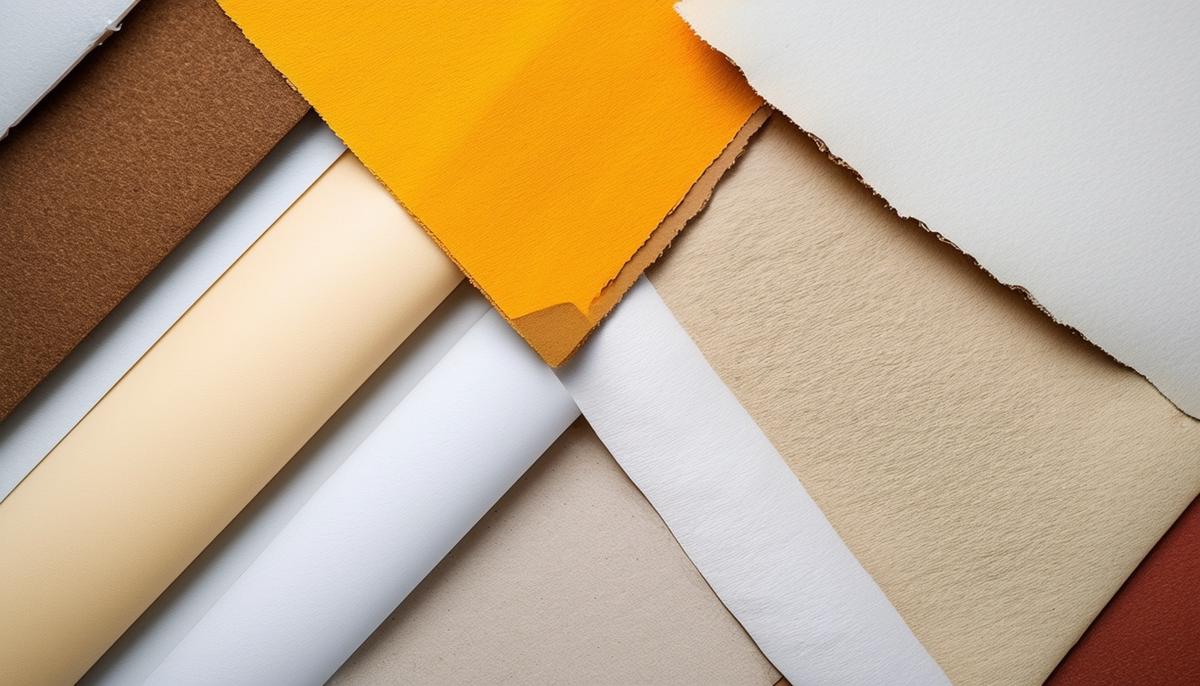
5. Coloured Pencils
Coloured pencils offer a vibrant kaleidoscope capable of transforming a mere sketch into a masterpiece. When selecting coloured pencils, prioritize quality. High-grade pencils boast richer pigmentation and provide superior durability and blendability, ensuring every stroke contributes to a seamless, luminous finish. Brands like Prismacolor or Faber-Castell are cherished for their reliable performance and extensive colour palettes.
Coloured pencils excel in offering control, making them perfect for detailing intricate patterns and textures. The softness of the pencils plays a pivotal role; softer leads allow for easier blending and layering, which are crucial for creating depth and shade. Experimenting with various pressure levels can unveil varying tones and intensities, lending a dynamic flair to the artwork.
Blending and layering techniques are key to achieving smooth colour transitions and adding texture:
- Burnishing involves using a white pencil or colourless blender to grind layers of pigment into the paper.
- Scumbling involves brushing a light colour over a darker tone in a fine circular motion.
Coloured pencils allow artists to mix hues directly on the paper, offering a hands-on experience in colour theory. Through selective blending and mixing, one can master colour relationships and mixing techniques.2
The versatility of coloured pencils extends beyond paper. With today's expanding range of compatible surfaces, from textured papers to specialized boards, artists can explore different backgrounds that influence the pencils' behaviour and outcome.
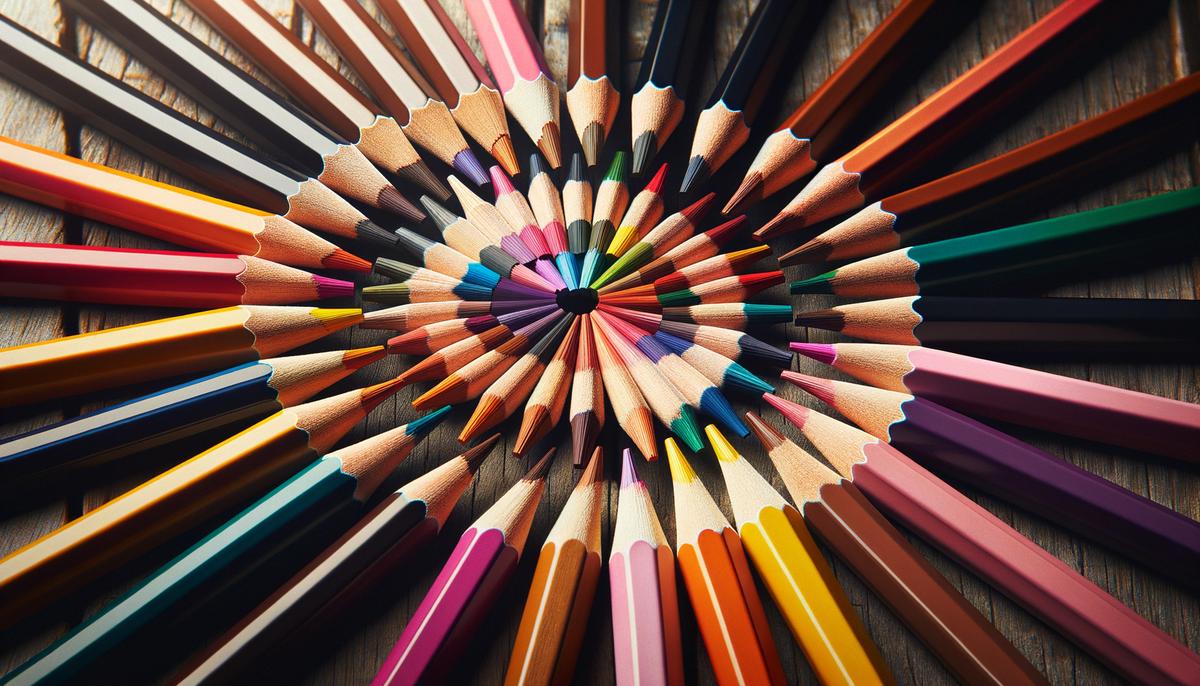
6. Paint Brushes
The core of any paintbrush is its bristles, and your choice here can deeply influence your painting's texture and finish. Natural bristles, made from animal hair such as hog or sable, are praised for their resilience and ability to hold a generous quantity of paint. They're ideal for oil paintings, working well with thick, heavy pigments. Synthetic bristles, made from nylon or polyester, are better suited for acrylics or watercolors. These bristles snap back into place more reliably and maintain their stiffness regardless of the amount of water they encounter, ensuring a consistent stroke every time.
The head shape of your brush serves specific purposes which can transform your art.
- Round brushes are versatile, their pointed tip appropriate for detailing and the wider base perfect for broader strokes.
- Flat brushes excel in bold, sweeping strokes and washes, covering larger areas with more uniformity.
- The filbert brush—a hybrid with a rounded, oval tip—works well for blending and soft edges, suited for portraits or skies where a delicate touch is needed.
Brush size impacts the scope of your strokes and the control you maintain over them. For detailing and precision work, smaller brushes are best while broader canvases require the broad strokes that larger brushes can deliver. The size needed often correlates with the scale of your project; maintaining a range of sizes ensures preparedness for any artistic challenge.
A paint brush should feel like a natural extension of your arm. Handles come in various lengths: shorter handles allow for closer, detailed work often favored by watercolorists. Longer handles, preferred in oil painting, allow for a more gestural, broader style, enabling artists to step back and survey their work without the need for close proximity.
Investing in quality brushes is an investment in your artistic future—maintaining them can preserve their life and effectiveness. Cleaning them with the appropriate solvents for your medium, realigning bristles, and storing them either flat or bristles up preserve their integrity. Each brushstroke is a key element of your artistic expression. Proper brush care ensures that every stroke remains intentional and effective.
Interacting with different brush types opens up many possibilities. Each brush offers unique opportunities for expression, waiting for the enthusiastic artist to explore. Like an orchestra under the command of a skilled conductor, a well-chosen set of brushes brings harmony to your palette, creating visuals that speak louder than words. Embrace the diversity they bring to your creative process, and watch as your canvases tell stories crafted by the bristles of your cherished tools.
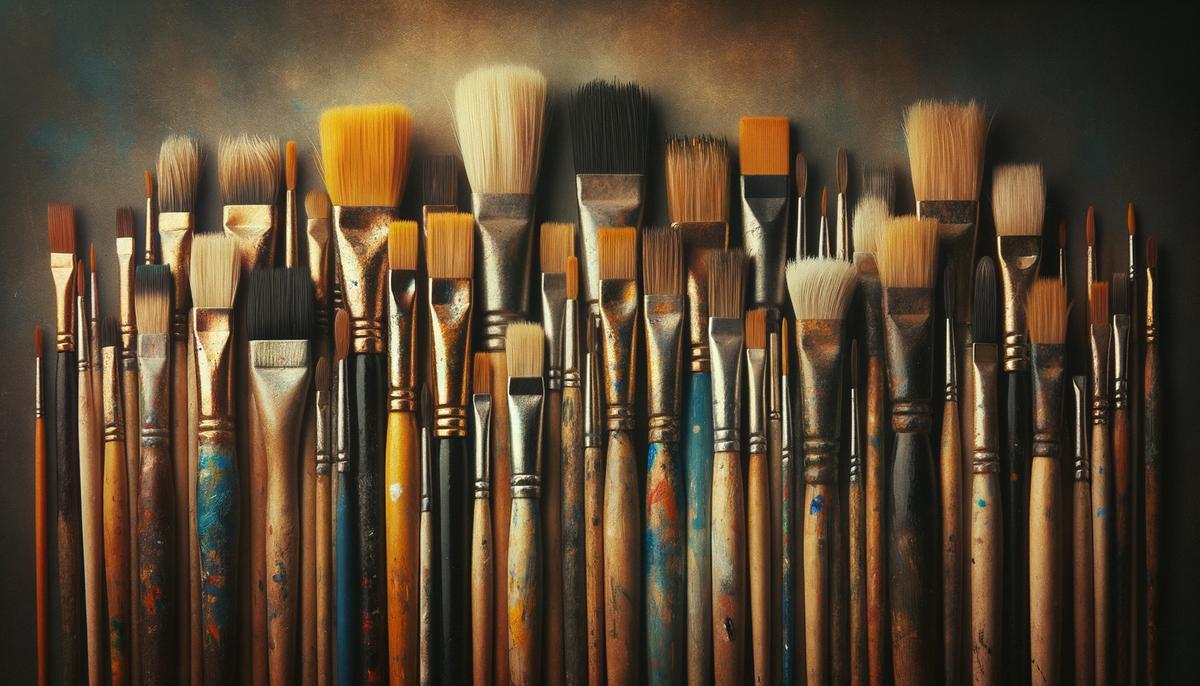
7. Watercolors
Watercolor painting relies on translucency—a characteristic that allows for ethereal compositions filled with light and fluidity. The charm of watercolors lies in their ability to blend seamlessly with the white of the paper, providing a natural luminosity that other mediums find hard to replicate.
Watercolor paints are made from finely ground pigments, bound by a water-soluble binder—usually gum arabic. This blend results in a paint that is easily manipulated with water, offering flexibility in its application. Starting with more diluted washes, you can build up to vibrant, opaque hues by gradually reducing the amount of water mixed with the pigment. This process, where the interaction of water and pigment delivers varying densities of color, leads to nuanced artworks.
Mastering watercolor involves the technique of gradients or color gradation. Often called 'graded wash', this technique starts with a saturated pigment at the top, gradually diluted as it progresses downwards on the canvas or paper, culminating in a faint hue. Achieving smooth gradients is important in reflecting skies, sunsets, or softly shadowed elements in your composition and imparts a natural progression of hues that yields depth and realism.
The choice of paper is crucial in watercolor painting. Watercolor papers are assessed based on their absorbency, texture, and weight.
- Opt for heavier papers (near 300 gsm) which absorb more pigment without warping.
- Cold-pressed papers offer a textured surface ideal for diffusing edges subtly, whereas hot-pressed ones are smooth, favoring detailed work.
Your selection can dramatically influence the interplay of water and pigment, creating different visual effects and texture.
Brushes with soft, fine bristles—typically made from synthetic or natural fibers like sable—are perfect for watercolors. Their capacity to hold significant amounts of water allows for prolonged strokes, useful when laying down tints or performing washes.
Some artists use masking fluid—applied before painting to protect specific paper areas from color—and then removed to reveal bright highlights or white spaces. Additionally, sponges or cloths for blotting can help adjust pigment concentration and achieve textural effects.
The path to mastering watercolors involves experimentation: testing the limits of water dilution, layering subtle hues, and understanding your materials' interaction. Beginners should explore the range this art form spans, from detailed botanical illustrations to sweeping, emotion-driven abstract pieces—all unified by the delicate dance of color with water.
Once completed, securing your artwork's longevity is about proper drying, preservation, and framing. Consider using UV-protected glass for framing and place watercolor pieces out of direct sunlight to prevent fading.
Watercolors offer a unique spectrum of hues. Their ability to seamlessly blend with the paper's inherent whiteness makes them a favorite among artists seeking to capture light's ethereal qualities. From whimsical illustrations to grand landscapes, watercolors have proven their versatility and enduring appeal.
By understanding the essentials—from choosing the right paper and brushes to grasping pigment interaction—you embark on a journey into a world where patience and precision converge to create captivating works of art. With practice and an openness to experimentation, you'll soon find watercolors becoming an indispensable part of your creative toolkit.
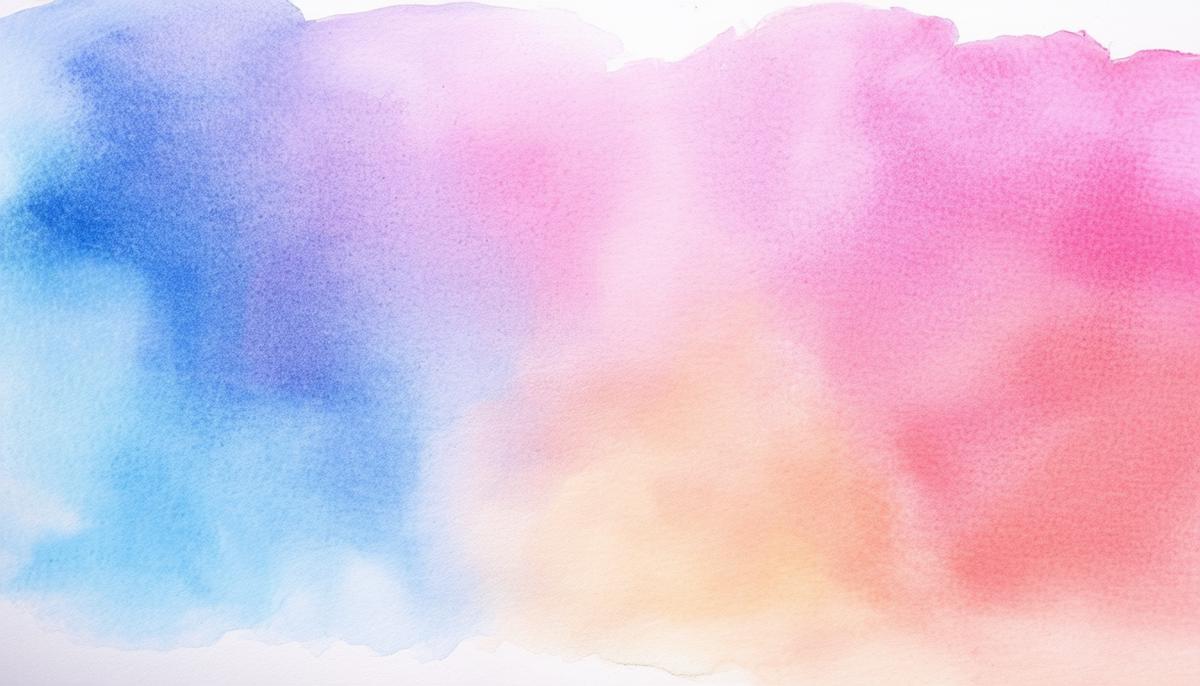
8. Acrylic Paints
Acrylic paints are cherished for their versatility and the freedom they give to painters to explore their imagination. Known for their fast drying times and forgiveness during layering and texturing, acrylics present many avenues of creativity, making them a favorite among beginners and experienced artists alike.
One of the greatest strengths of acrylics is their adaptability. Whether it's stretched canvases, wood panels, ceramic, or even fabric, acrylics adhere easily, opening up many possibilities for artistic exploration. Their plasticity translates into an attribute often called 'open time'—the period while the paint remains workable. Though naturally brief due to their quick-drying nature, mediums can be blended into the paint to customize this working time, allowing details to be refined.1
The thick consistency of acrylics serves as a foundation for creative manipulations. Through the use of gel mediums, pastes, or even lightweight modeling materials, one can create heightened textural effects, from smooth undulations to stratified impasto techniques that give the painting an almost sculptural quality. Acrylics allow the painter to not only play with colors but also to sculpt the terrain of their artworks.
Foremost among their properties is the steadfastness of acrylic paints in preserving the luminance and depth of tones. Unlike some mediums that darken as they dry, acrylics maintain consistency in color, avoiding unwanted surprises after drying. This faithfulness provides peace of mind — knowing that the vivid emerald or deep ultramarine you selected will remain just as anticipated.
For those who enjoy gentle gradations, acrylics provide a rewarding experience. They are amenable to wet blending where colors can be mixed directly on the canvas as well as dry brushing where layers are built atop one another, each maintaining its own integrity.2 This trait, coupled with the ability to wash and dilute with water, makes acrylics robust for bold expressions and subtle nuances.
For beginners, acrylics serve as a forgiving introduction to the world of art. Their quick drying cuts hours of waiting and their malleable consistency avoids the frustration of unintended splotches yet rewards further refinement. But as your skills grow, acrylics can scale with you; sophisticated enough to realize complex pieces with fine details and intricate depth.
Discussing practical care, acrylic paintings generally need very little maintenance once completed. However, shielding your masterpieces from extreme heat and direct sunlight will prevent any potential fading, protecting your artistic expressions just as vibrantly as you created them.
Using acrylics is about pushing the boundaries of paint physics and color chemistry, tuned harmoniously to each brushstroke. As we venture further into the territories of textures and hues, these paints become magical concoctions that transform your visions into tangible realities.
Through each dip and stroke, acrylic paints reassure the artist with an enthusiasm that encourages experimentation. They are not simply a medium; they become an artist's spirited collaborator in their perennial dance on canvas—at once a foundation and celebration of newfound creative arenas. Embrace them, manipulate them, and let them conduct your artistic symphonies into dazzling realities.
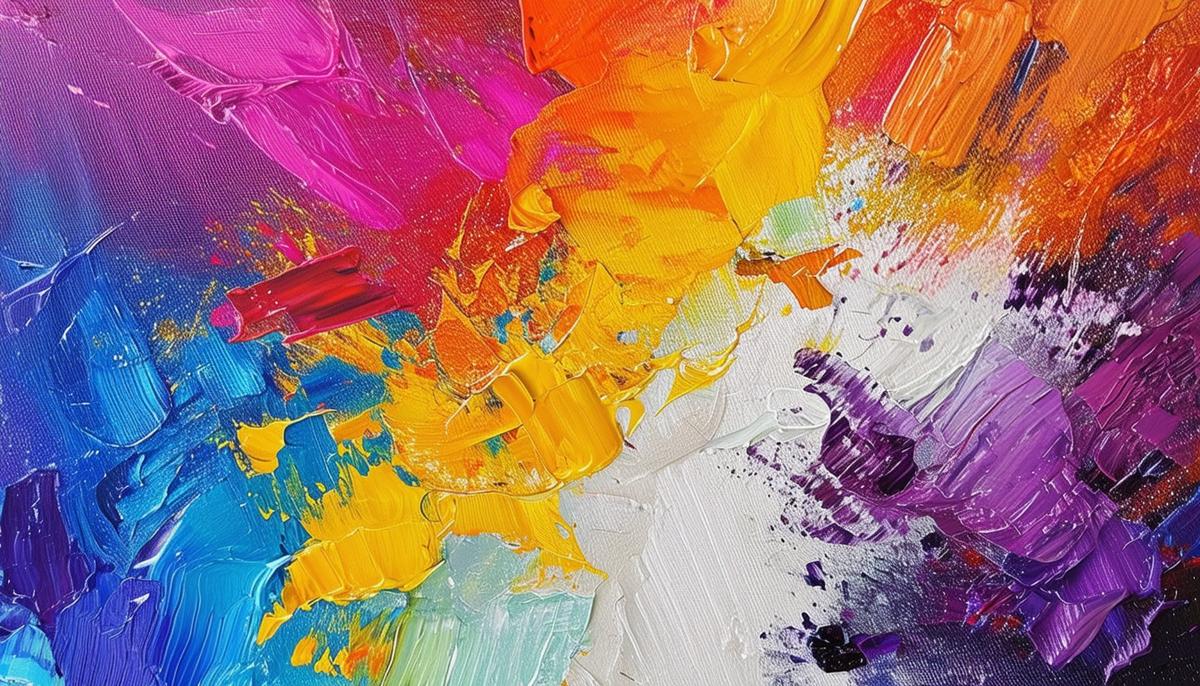
9. Artistic Software
In the digital age, artistic software has emerged as a powerful tool for modern artists, offering a spectrum of innovative possibilities. With a mouse click or a stylus tap, artists can access a world of color adjustments, brush variations, and editing conveniences.
Software like Adobe Photoshop, Corel Painter, and Procreate allow artists to implement techniques that would once demand physical materials, while avoiding the usual mess and expense. These platforms provide simulations of various media, combined with countless brushes, textures, and effects. The convenience of these digital tools allows for intricate designs to be crafted with the ease of layering.
One standout benefit of artistic software is the ability to undo and iterate. Digital artwork can be edited and transformed without any detriment to the original composition. Vector applications expand possibilities beyond standard graphics, allowing for scale manipulation without compromising quality.
Modern artistic software also seamlessly integrates traditional and digital techniques. Drawing tablets and advanced gadgets like the Wacom tablet allow artists to maneuver digital spaces with a hand-held stylus, mirroring the classical interaction of pen on paper or brush on canvas. This synergy enables the nuances of pressure, angle, and movement to translate into digital strokes.
Digital art platforms also promote an environmentally conscious creative process by reducing dependency on physical materials. By choosing digital, artists can significantly reduce waste from unused art supplies and diminish their eco-footprint.
Artistic software makes the art creation process more accessible, putting tools into the hands of both seasoned artists and enthusiastic beginners. Sharing artistic visions has never been easier, as digital files can transcend geographical barriers, allowing art to be viewed and appreciated across continents.
With the rise of augmented reality (AR) and virtual reality (VR), artistic software is set to evolve further. Artists will soon be able to design immersive experiences, not just visual elements—a leap made possible by advanced algorithms and digital canvases.
Artistic software has expanded the artist's toolkit, fostering new creative expressions and undisputed convenience. Embracing these tools opens up unprecedented realms of artistry, challenging conventions and championing innovation. As technology and tradition meld, we continue to witness an evolution in art, from tactile pigmentations to strokes of pixels, each one allowing artists to narrate their unique stories.
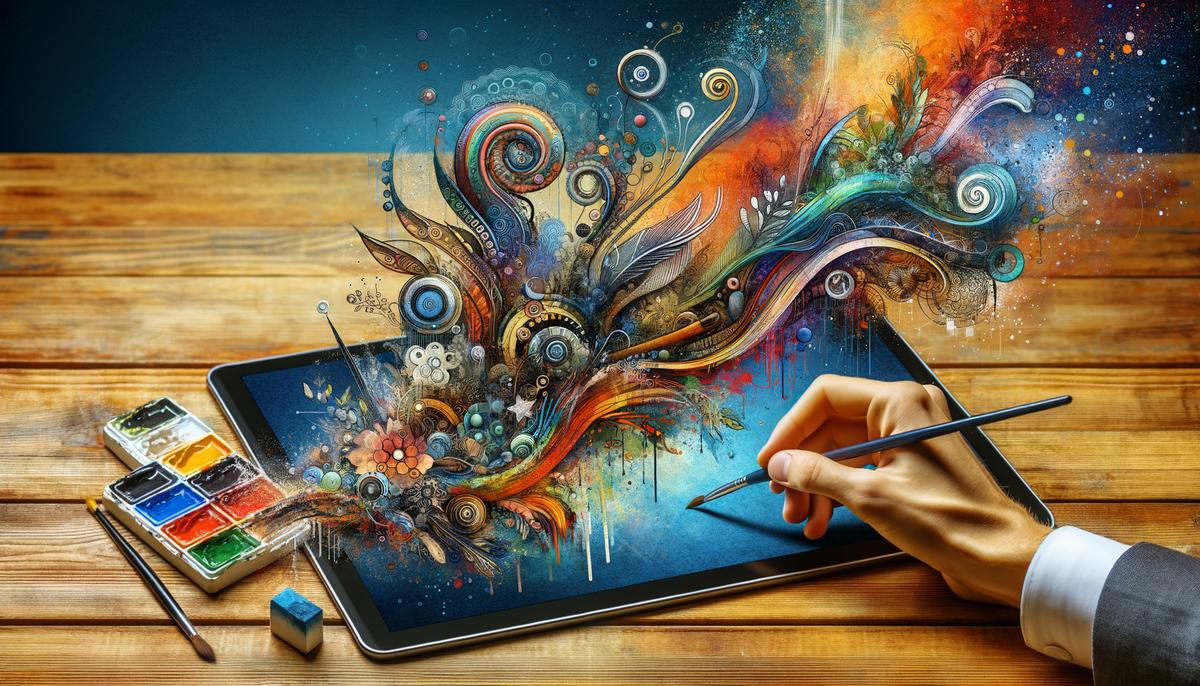
10. Mixed Media
Mixed media art invites artists to combine a variety of disparate materials to create artworks that are vibrant mosaics of texture, color, and concept. Each piece serves as a testament to the artist's ingenuity and adventurous spirit.
At the core of mixed media are the supplies, which include:
- Paints and mediums
- Papers and card stock
- Adhesives and sealers
- Textiles and embellishments
- Drawing implements
- Found objects
These elements offer a dimensional playground for artists to explore.
Mixed media involves a layering process that builds texture and story. Techniques like distressing edges, using translucent layers, or sanding between layers can produce a complex visual and tactile surface. Mark making, photo transfer, and collage are also key techniques in mixed media, allowing artists to imprint personal patterns, incorporate photographic imagery, and assemble various elements into an intriguing visual story.
The allure of mixed media lies in its infinite possibilities and its encouragement for the artist to remain inventively unfettered. Materials can be viewed not just for what they are but for what they might represent within an artwork's thematic cohesion. Mixed media equips artists with a fuller palette of expressive elements, allowing them to articulate subtle textures of emotions and layered revelations more intricately.
Mixed media celebrates diversity—of materials, techniques, and inspirations. It's about seeing potential art in every shadow of life and every drawer of forgotten trinkets. Whether adding paper ephemera collected from a memorable trip or assembling fabrics passed down through generations, every material has a story to tell. Mixed media intricately weaves them into a resplendent quilt of expression, marking every creation uniquely yours.
If ever there was a call to 'think outside the box' in the arts, mixed media loudly and inspiringly answers that call. It's time to gather those bits and bobs you've collected and turn them into more than just parts; blend them into an epistle of creative genius in which every material plays its pivotal role.
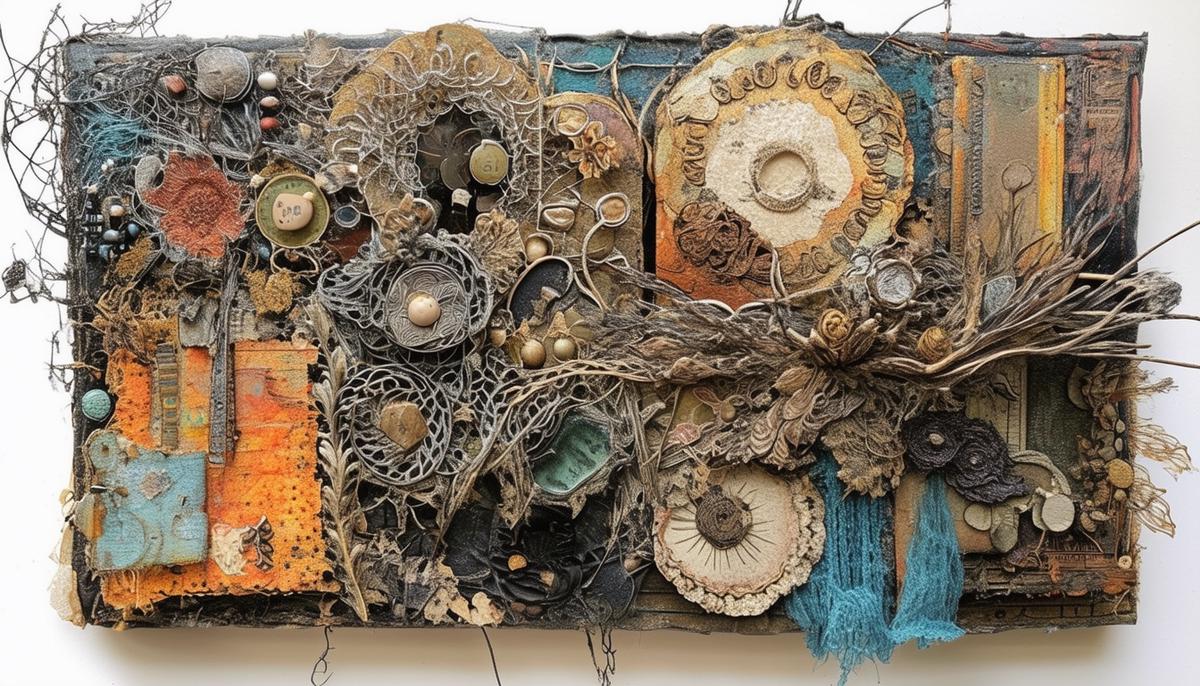
In conclusion, recognizing and utilizing the right art supplies can significantly enhance your creative expression. The journey through various artistic mediums is not just about using tools; it's about discovering how these tools can best serve your unique vision and story in the art world.























